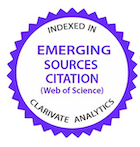Colheita e avaliação do sêmen de Sagui-de-Tufo-Branco (Callithrix jacchus)
Palavras-chave:
Sanidade AnimalResumo
método de eletroejaculação na colheita de sêmen de saguis-de-tufo-branco (Callithrix jacchus) e realizar uma avaliação descritiva dos aspectos físicos e morfológicos do ejaculado. Foram utilizados três espécimes adultos e colhidas nove amostras de sêmen de cada animal, pela eletroejaculação. Para os testes de dissolução dos coágulos seminais, utilizaram-se nove variações de três tipos de meios. De todas as variações estudadas, o meio TALP, livre de íons Ca+2, acrescido de tripsina a 0,5%, durante 45 minutos, a 37º C, mostrou-se o mais eficiente na dissolução do coágulo, porém não foi capaz de dissolvê-lo completamente. O método de eletroejaculação para colheita de sêmen em C. jacchus mostrou-se viável, apresentando sucesso em todas as colheitas, porém a qualidade do sêmen apresentou-se baixa.PALAVRAS-CHAVES: Callithrix jacchus, eletroejaculação, primata, sêmen.
Downloads
Não há dados estatísticos.
Downloads
Publicado
2009-07-03
Como Citar
VERONA, Carlos Eduardo da Silva; SOUZA, Fabiana Ferreira de; TONIOLLO, Gilson Hélio; GARCIA, Joaquim Mansano; ESPER, César Roberto. Colheita e avaliação do sêmen de Sagui-de-Tufo-Branco (Callithrix jacchus). Ciência Animal Brasileira / Brazilian Animal Science, Goiânia, v. 10, n. 2, p. 544–552, 2009. Disponível em: https://revistas.ufg.br/vet/article/view/1061. Acesso em: 24 dez. 2025.
Edição
Seção
Medicina Veterinária
Licença
Copyright (c) 2009 Ciência Animal Brasileira / Brazilian Animal Science

Este trabalho está licenciado sob uma licença Creative Commons Attribution 4.0 International License.
Autores que publicam nesta revista concordam com os seguintes termos:
- Autores mantém os direitos autorais e concedem à revista o direito de primeira publicação, com o trabalho simultaneamente licenciado sob a Licença Creative Commons Attribution que permite o compartilhamento do trabalho com reconhecimento da autoria e publicação inicial nesta revista.
- Autores têm autorização para assumir contratos adicionais separadamente, para distribuição não-exclusiva da versão do trabalho publicada nesta revista (ex.: publicar em repositório institucional ou como capítulo de livro), com reconhecimento de autoria e publicação inicial nesta revista.
- Autores têm permissão e são estimulados a publicar e distribuir seu trabalho online (ex.: em repositórios institucionais ou na sua página pessoal) a qualquer ponto antes ou durante o processo editorial, já que isso pode gerar alterações produtivas, bem como aumentar o impacto e a citação do trabalho publicado (Veja O Efeito do Acesso Livre).


























